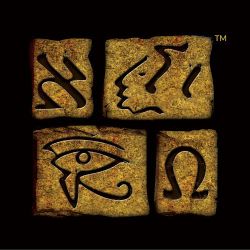
FAIR is a non-profit organization dedicated to providing well-documented answers to criticisms of the doctrine, practice, and history of The Church of Jesus Christ of Latter-day Saints.

Some critics have focused on the appearance of language from the longer ending of the Gospel According to Mark in the Book of Mormon. Mormon writes:
For behold, thus said Jesus Christ, the Son of God … : Go ye into all the world, and preach the gospel to every creature; And he that believeth and is baptized shall be saved, but he that believeth not shall be damned; And these signs shall follow them that believe—in my name shall they cast out devils; they shall speak with new tongues; they shall take up serpents; and if they drink any deadly thing it shall not hurt them; they shall lay hands on the sick and they shall recover; (Mormon 9:22–24)
Similarly, in Ether 4:18 we read that “he that believeth and is baptized shall be saved; but he that believeth not shall be damned; and signs shall follow them that believe in my name.”
The wording here is nearly identical to the Gospel of Mark where it is written:
15 And he said unto them, Go ye into all the world, and preach the gospel to every creature.
16 He that believeth and is baptized shall be saved; but he that believeth not shall be damned.
17 And these signs shall follow them that believe; In my name shall they cast out devils; they shall speak with new tongues;
18 They shall take up serpents; and if they drink any deadly thing, it shall not hurt them; they shall lay hands on the sick, and they shall recover.(Mark 16:15–18)
These verses from Mark are from the “longer ending of Mark”. Scholars have believed that this part of the Gospel was not original to it and added at a later time by editors. Thus, the question becomes: if these words weren’t actually spoken by Jesus, then why would he repeat them to the Nephites and why would they then show up in the Book of Mormon?
As Book of Mormon Central has written:
But before jumping to conclusions about the authenticity of either Mark 16:15–18, or Mormon 9:22–24, there are several considerations to keep in mind. First, in recent years, several scholars have argued that the text in Mark 16:9–20 is indeed an authentic part of the Gospel of Mark.[1] These scholars note that many other early New Testament manuscripts contain these verses,[2] and bring a wide array of additional evidence together, making a credible case for the early inclusion of the long ending in Mark’s gospel.[3] Because the textual evidence is extremely complex,[4] legitimate questions about the history of the long ending of Mark remain, but the possibility that it was an original part of the Gospel of Mark is a defensible position to take.[5]
It is also significant that several scholars who reject Mark 16:9–20 as part of the original Gospel of Mark nonetheless believe that the long ending pre-existed its attachment to Mark.[6] This means that even if it was not originally part of Mark’s gospel, it likely stands as an early, independent witness of the resurrection containing the authentic teachings of the Savior’s post-resurrection ministry.[7]
Another important detail to keep in mind is that even among those who reject the authenticity of Mark 16:9–20, there is considerable debate about how the Gospel of Mark originally ended. Some believe it ended as a dramatic cliff-hanger at Mark 16:8.[8] Others, however, argue that there is another “lost ending” or two.[9] It is impossible to know exactly what such other endings would have said, but N. T. Wright argues that it most likely would have been similar to the current ending, including a commission similar to that in Mark 16:15–18.[10][11]
Thus, on the grounds that this teaching is based in the authenticity of the longer ending, this doesn’t propose a significant problem for the Book of Mormon. However, they note that this problem doesn’t have to hinge on its authenticity:
It important to recognize, however, that even though the English translation of Mormon 9:22–24 was possibly influenced by the King James translation of Mark 16:15–18, Moroni’s source was not the Gospel of Mark.[12] Rather, Moroni was drawing on the teachings of Christ recorded among the Nephites (Mormon 9:22). Thus, the authenticity of the words of Jesus in Mormon 9:22–25 is not ultimately dependent on the authenticity of the “long ending” of Mark. Indeed, belief in the authenticity of these words in the ending of Mark may, on the other hand, benefit from the testimony of the Book of Mormon.[13]
Notes

FAIR is a non-profit organization dedicated to providing well-documented answers to criticisms of the doctrine, practice, and history of The Church of Jesus Christ of Latter-day Saints.
We are a volunteer organization. We invite you to give back.
Donate Now